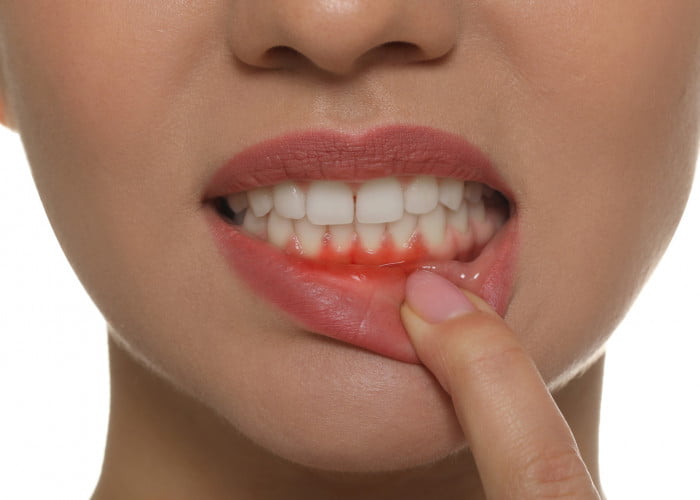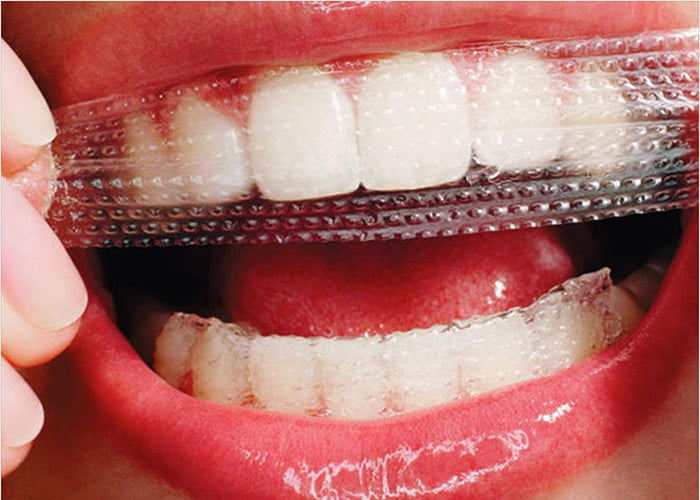Do whitening strips work? Whitening strips have become increasingly popular for those seeking a brighter, whiter smile. However, with so many products on the market, it can be difficult to know which ones to trust. In this article, we take a closer look at the effectiveness of whitening strips and explore whether they are a reliable option for achieving a dazzling smile. Read on to discover our analysis of the use of whitening strips and whether you should trust this product or not.
How to Use Whitening Strips
Using whitening strips can be an effective way to achieve a brighter smile in the comfort of your own home. Follow these steps to ensure you get the best results:
- Start with clean teeth: Before applying the whitening strips, make sure your teeth are clean and free from any food particles or plaque. Brush and floss your teeth thoroughly.
- Open the package: Carefully open the package of whitening strips. You will typically find two strips per package, one for the upper teeth and one for the lower teeth.
- Apply the strips: Take the strip meant for the upper teeth and gently apply it to the front surface of your teeth, ensuring that it adheres well. Repeat the same process with the strip for the lower teeth.
- Align the strips: Use your fingers or a clean toothbrush to press the strips firmly against your teeth, ensuring they are properly aligned and in contact with all the desired areas.
- Keep the strips on: Most whitening strips require a specific amount of time to be left on. Refer to the instructions provided with the product to determine the recommended duration. It is generally around 30 minutes.
- Remove and discard: Once the recommended time has passed, carefully remove the strips from your teeth. Dispose of them properly.
- Rinse and clean: After removing the strips, rinse your mouth thoroughly with water to remove any residual gel. Brush your teeth gently to ensure all the whitening products are removed.
- Repeat as needed: Depending on the product and desired results, you may need to repeat the process daily or as instructed by the manufacturer. Be sure to follow the recommended usage guidelines.
What are the Ingredients in Whitening Strips?
Whitening strips typically contain ingredients to help remove stains and brighten your teeth. While the specific composition may vary among different brands, here are some common ingredients found in whitening strips:
- Hydrogen Peroxide: This is the primary active ingredient in most whitening strips. It helps break down stains on the surface of the teeth and lighten their color.
- Carbamide Peroxide: Similar to hydrogen peroxide, carbamide peroxide is a bleaching agent that helps remove stains and discoloration.
- Glycerin: Glycerin is often used in whitening strips to keep the gel moist and provide a comfortable application. It also helps prevent the strips from drying out.
- Water: Water is used as a base for the gel in whitening strips, ensuring proper consistency and ease of application.
- Sodium Hydroxide: This ingredient helps adjust the pH level of the whitening gel, making it more effective in breaking down stains.
- Other Ingredients: Some whitening strips may also contain flavoring agents, adhesive materials, and additional stabilizers to enhance the overall user experience.
Are Whitening Strips Safe?
Whitening strips, when used correctly and as directed, are generally considered safe for use. However, it is essential to be aware of potential side effects and take precautions to minimize any risks.
Side Effects of Whitening Strips
Whitening strips are a popular and convenient way to achieve a brighter smile, but they may not be suitable for everyone. While most people tolerate whitening strips well, some may experience certain side effects.
-

Side Effects of Whitening Strips
Irritated Gums
In some cases, the peroxide-based whitening gel may come into contact with the gums, leading to temporary gum irritation or sensitivity. This can manifest as redness, soreness, or mild discomfort. If you experience gum irritation, discontinue use of the whitening strips for a few days until the symptoms subside. You can also try using a sensitive toothpaste or applying a small amount of petroleum jelly to the gums before using the strips to provide a protective barrier.
Read more: How Much Do Dental Bridges Cost?
-

Irritated Gums
Tooth Sensitivity
One common side effect of whitening strips is tooth sensitivity. The bleaching agents in the strips can temporarily increase tooth sensitivity, especially to hot or cold temperatures. If you already have sensitive teeth, you may be more prone to experiencing this side effect. Using a toothpaste specifically formulated for sensitive teeth or applying a desensitizing gel can help alleviate sensitivity. It’s also recommended to avoid consuming hot or cold foods and beverages immediately after using the whitening strips.
-

Tooth Sensitivity
Temporary Discoloration
Occasionally, whitening strips may cause temporary tooth discoloration. This is usually a result of uneven whitening or the presence of underlying dental conditions, such as tooth decay or dental restorations. If you notice any discoloration, it’s advisable to consult with a dentist who can assess the situation and provide appropriate guidance.
-

Temporary Discoloration
Reasons Why You Should Whiten Your Teeth
There are several reasons why individuals choose to whiten their teeth using whitening strips. Some of the common motivations include:
- Enhanced Aesthetic Appeal: Whiter teeth can significantly improve your smile and overall appearance, boosting self-confidence and leaving a positive impression on others.
- Removal of Surface Stains: Whitening strips can effectively remove common stains caused by coffee, tea, tobacco, or certain foods, restoring the natural color of your teeth.
- Non-Invasive Option: Compared to professional dental treatments, whitening strips offer a non-invasive and more affordable alternative for teeth whitening.
- Convenience: Using whitening strips at home allows for flexibility and convenience, as you can incorporate them into your daily routine without the need for frequent dental visits.
Alternatives to At-Home Whitening Strips
If you’re looking for alternatives to at-home whitening strips, consider the following options:
- Professional Teeth Whitening: Dentists offer in-office teeth whitening procedures that utilize stronger bleaching agents and advanced techniques to deliver more immediate and noticeable results.
- Whitening Toothpaste: Whitening toothpaste contains mild abrasives that help remove surface stains over time. While it may not produce dramatic results, it can be a good option for maintaining a brighter smile after using whitening strips.
- Whitening Mouthwash: Whitening mouthwash typically contains hydrogen peroxide or other whitening agents that can help brighten your teeth while freshening your breath.
- Natural Remedies: Some people opt for natural remedies like oil pulling with coconut oil or using baking soda as a homemade toothpaste to help remove stains and brighten teeth. However, it’s important to note that the effectiveness of these methods may vary, and consulting with a dentist is recommended.
F&Q
Some of the questions that people are most interested in, we will list and answer below so that everyone knows more about teeth whitening strips. Distinguish yourself which type is suitable for you.
How Long Should I Keep Whitening Strips On?
The recommended wearing time can vary depending on the brand and strength of the whitening strips. Typically, it ranges from 30 minutes to 1 hour. It’s crucial to follow the instructions provided with the specific product you are using to ensure optimal results without causing harm to your teeth or gums.
Should I Brush My Teeth Before Using Whitening Strips?
Definitely yes, it’s recommended to brush your teeth before applying whitening strips. This helps remove any plaque or debris on the surface of your teeth, allowing the whitening gel to make better contact with the enamel. However, avoid brushing immediately before using the strips as it can cause gum irritation. Wait at least 30 minutes after brushing before applying the whitening strips.
How Often Should I Use Whitening Strips?
The frequency of using whitening strips can vary depending on the specific product and your desired results. In general, most manufacturers recommend using the strips once a day for a certain duration, such as 7 to 14 days. However, it’s important to follow the instructions provided with the product. Using the strips more frequently or for longer durations than recommended can lead to increased tooth sensitivity or potential damage to the enamel.
Considering a Professional Whitening Treatment?
If you’re seeking more significant and immediate results, you may consider a professional teeth whitening treatment. Dentists can provide professional-grade whitening solutions that are stronger and more effective than over-the-counter options. They can tailor the treatment to your specific needs and ensure proper application and safety. Consulting with a dental professional can help you determine if a professional whitening treatment is the right choice for you.
Contact Us!
If you have any further questions or concerns about using whitening strips or need personalized advice, don’t hesitate to reach out to our team. We’re here to help you achieve a brighter, more confident smile. Contact us today to schedule a consultation or to discuss your teeth whitening options.
In conclusion
The effectiveness of whitening strips varies from person to person. While some people may see significant improvement in the whiteness of their teeth, others may experience little to no change. It’s important to keep in mind that whitening strips are not a one-size-fits-all solution and may not be suitable for everyone. Before using whitening strips, it’s best to consult with your dentist to determine if they are a safe and effective option for you.



